The Abandoned Car Factory
Prague is a city of postcard-perfect architecture: from immaculate works of Gothic beauty – like St. Vitus Cathedral and the 13th century Old New Synagogue in Josefov – to the statue-lined Charles Bridge, or the monumental neo-Renaissance building of the National Museum looking out across Wenceslas Square. It is not a city that most would associate with industrial decay, however Prague’s former palaces of industry are no less grand, even while history is in the process of burying them.
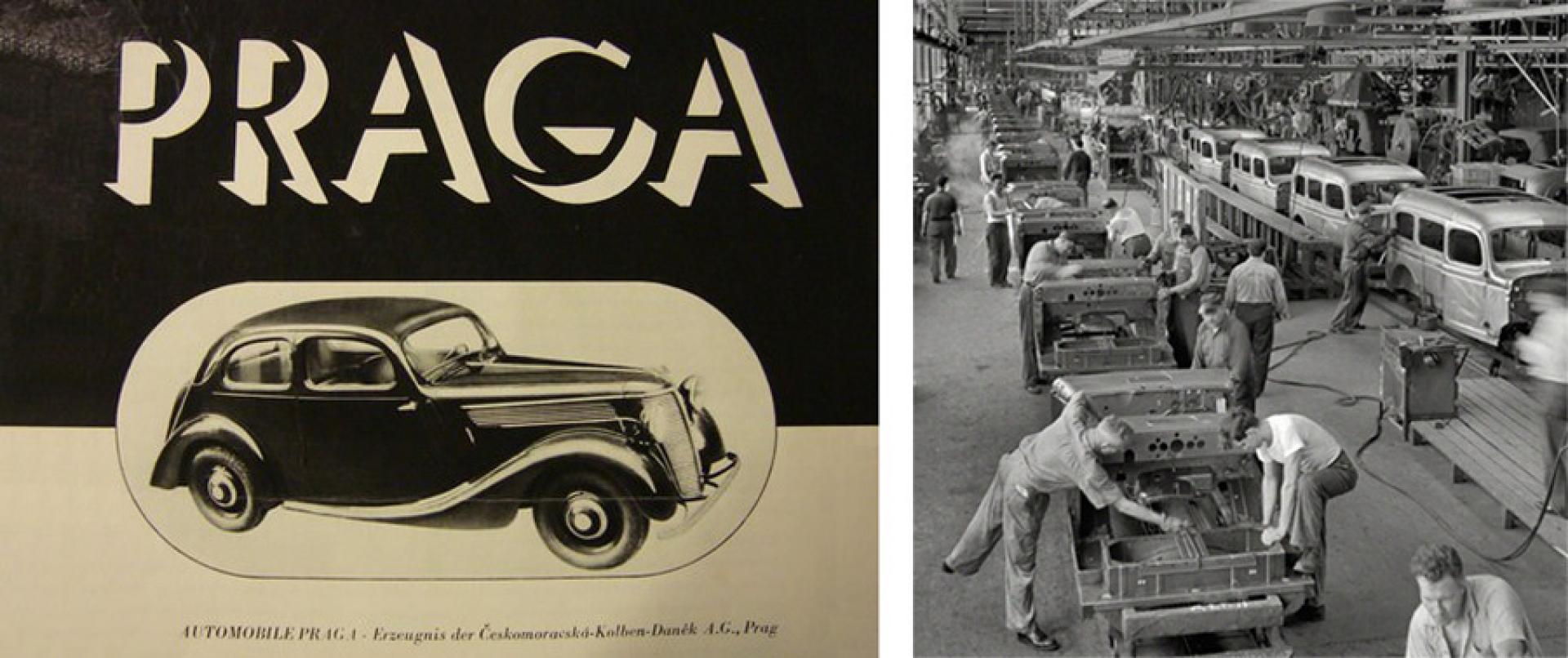
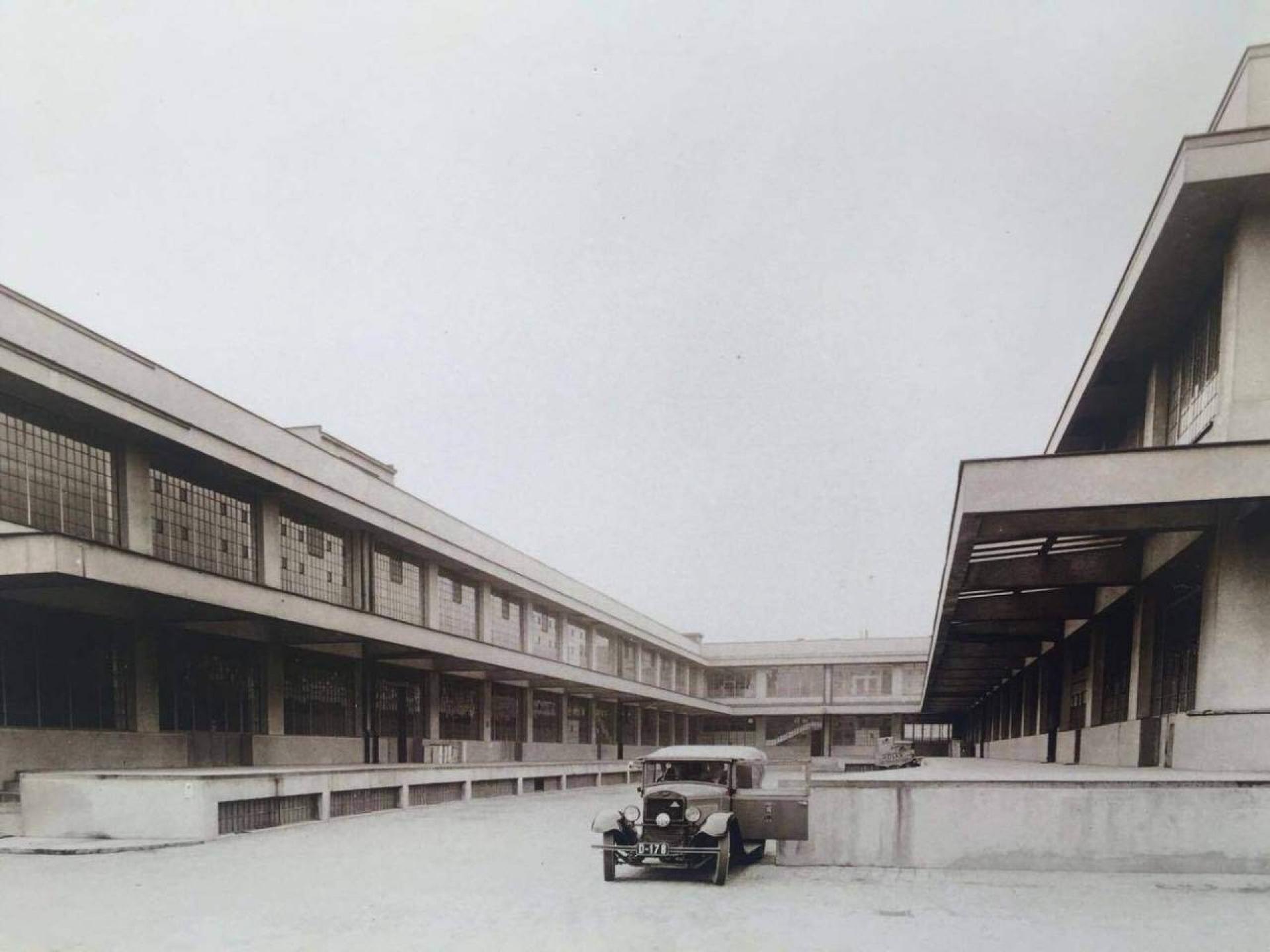
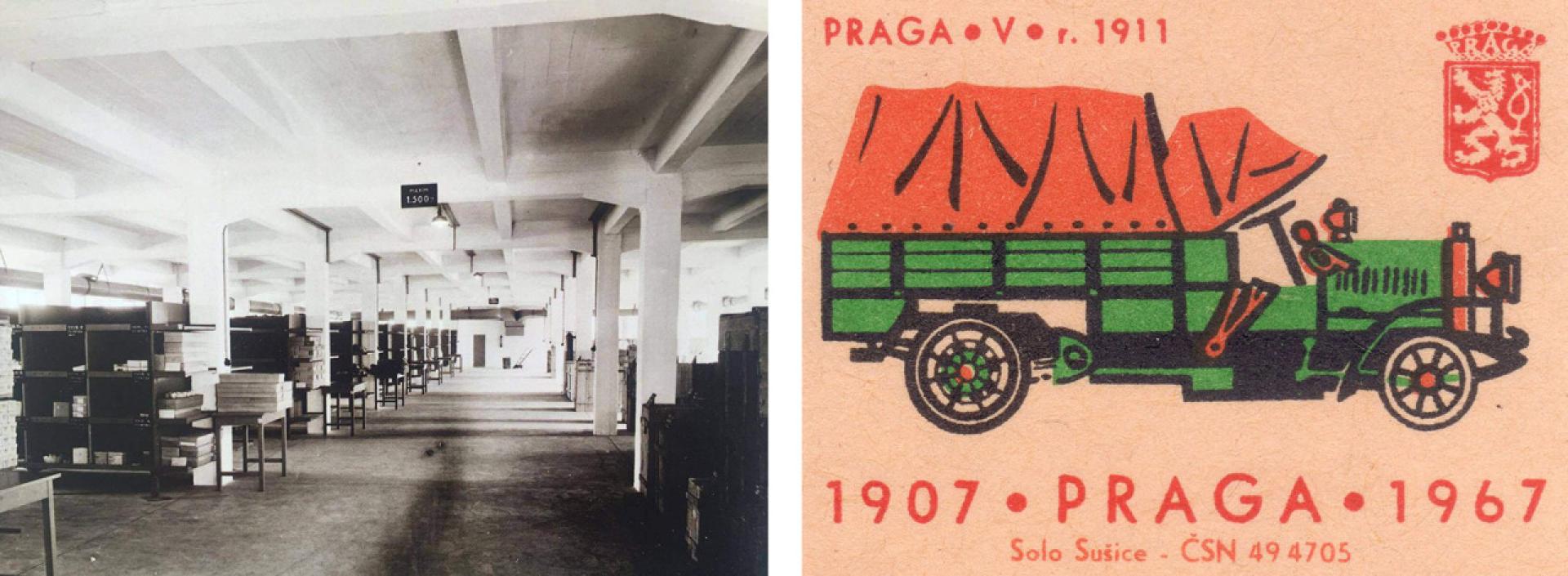
The Praga Car Factory Pragovka. | Photo via E-Factory.cz
The Praga Car Factory Pragovka on the city’s eastern edge was once the beating heart of the Czechoslovak manufacturing industry. It played a significant role in the city’s 20th century history, but it was here at the Prague’s darkest days was set into motion. In 1968 workers at Pragovka sent a letter to the Soviet Embassy requesting support in the fight against liberalisation. This letter, published in Pravda, would then be used as justification for the Warsaw Pact invasion of Czechoslovakia.
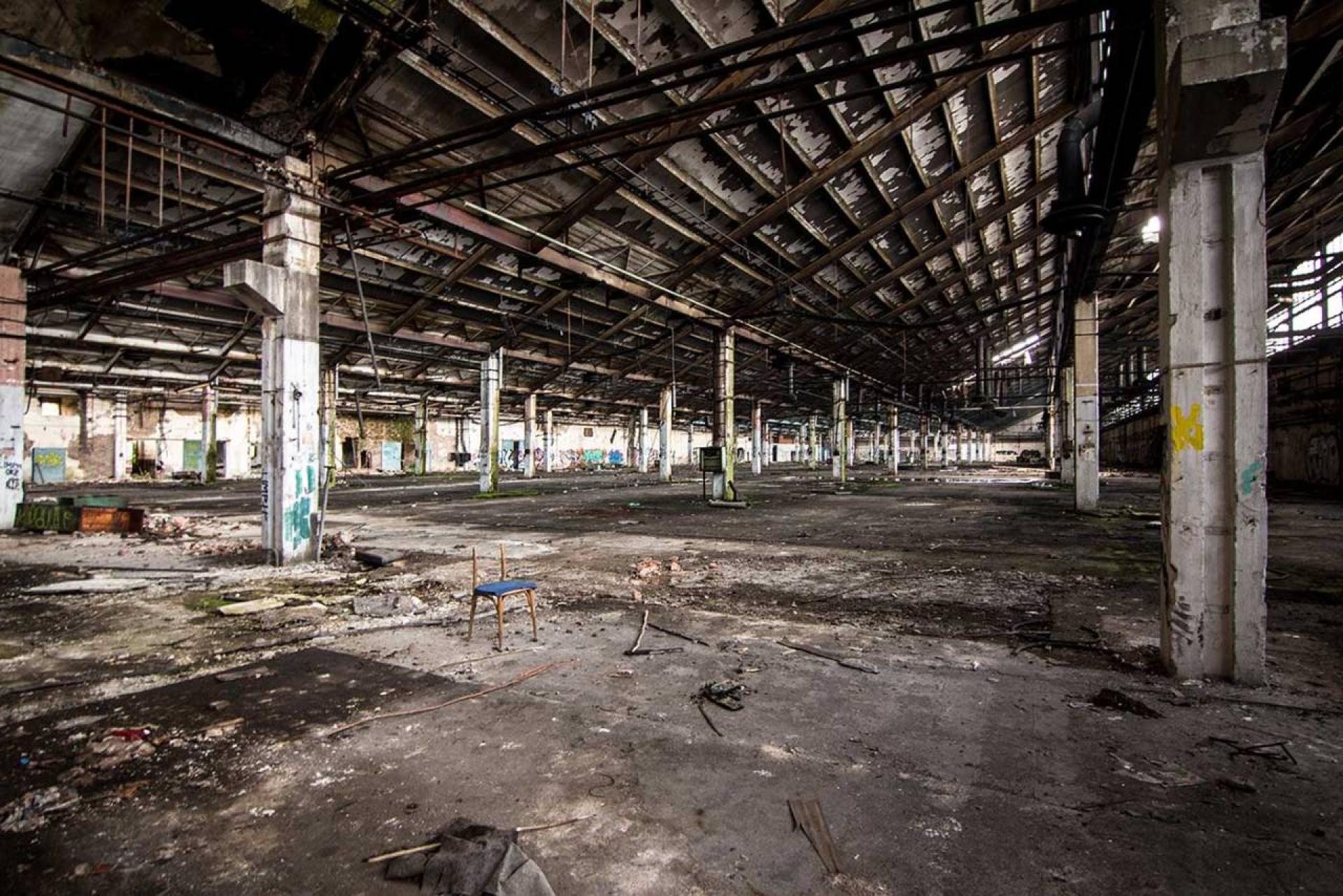
The Praga Car Factory today. | Photo Katka Havlíková
Pragovka is abandoned since the turn of the 21st century and is now a sprawling ruin, its extravagant factory halls succumbing slowly to time and nature. In 2017 I went to explore what was left of it. The Car Factory was founded in 1907 as a manufacturing site in the eastern suburbs of Prague, with just 30 employees. Two years later, its parent company adopted the name ‘Praga’ – the car brand used the Latin form of the city’s name in the hope of sounding more international. During WWI the Praga factory (then known as the First Czech-Moravian Machine Factory) supplied the Austro-Hungarian army; then after 1918 and the independence of Czechoslovakia, it began to focus more on passenger cars.
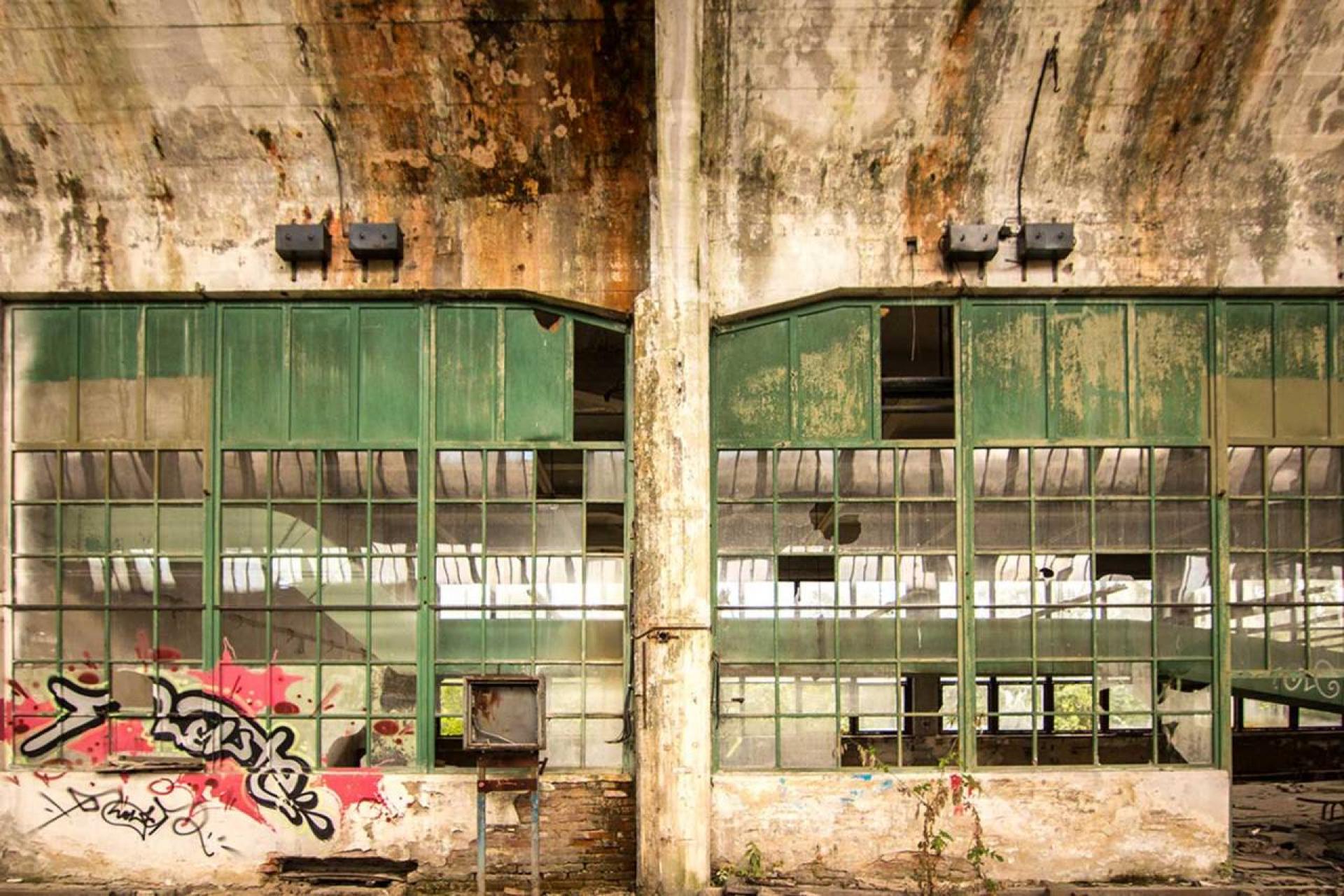
The main hall of the Pragovka factory in 2017. | Photo Katka Havlíková
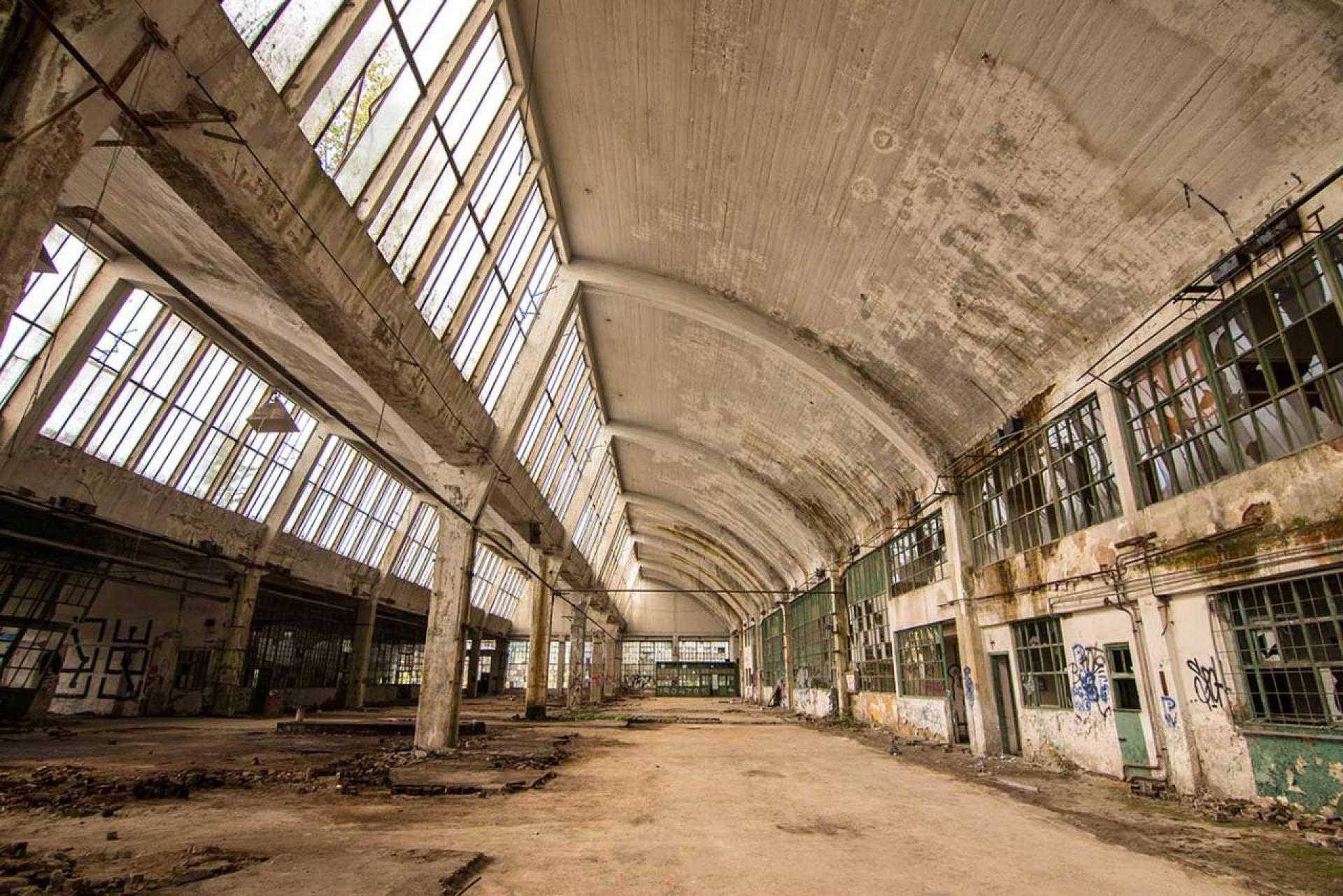
The large, angled windows allowed plenty of natural light to enter, reducing electricity costs. | Photo Katka Havlíková
In 1927 Praga was incorporated into the new ČKD (Českomoravská Kolben-Daněk) group, one of the largest engineering companies in Czechoslovakia. Among other vehicles (including tanks, locomotives, tractors, motorcycles and metro cars), ČKD produced cars under the Praga, Škoda and Tatra brands, and was famous for making the Tatra T3 tramcar – a design which would sell almost 14,000 units, and become an iconic sight on the streets of socialist cities from Sarajevo to Tashkent. Meanwhile as many as half of the taxis on Prague’s streets had rolled out of this factory.
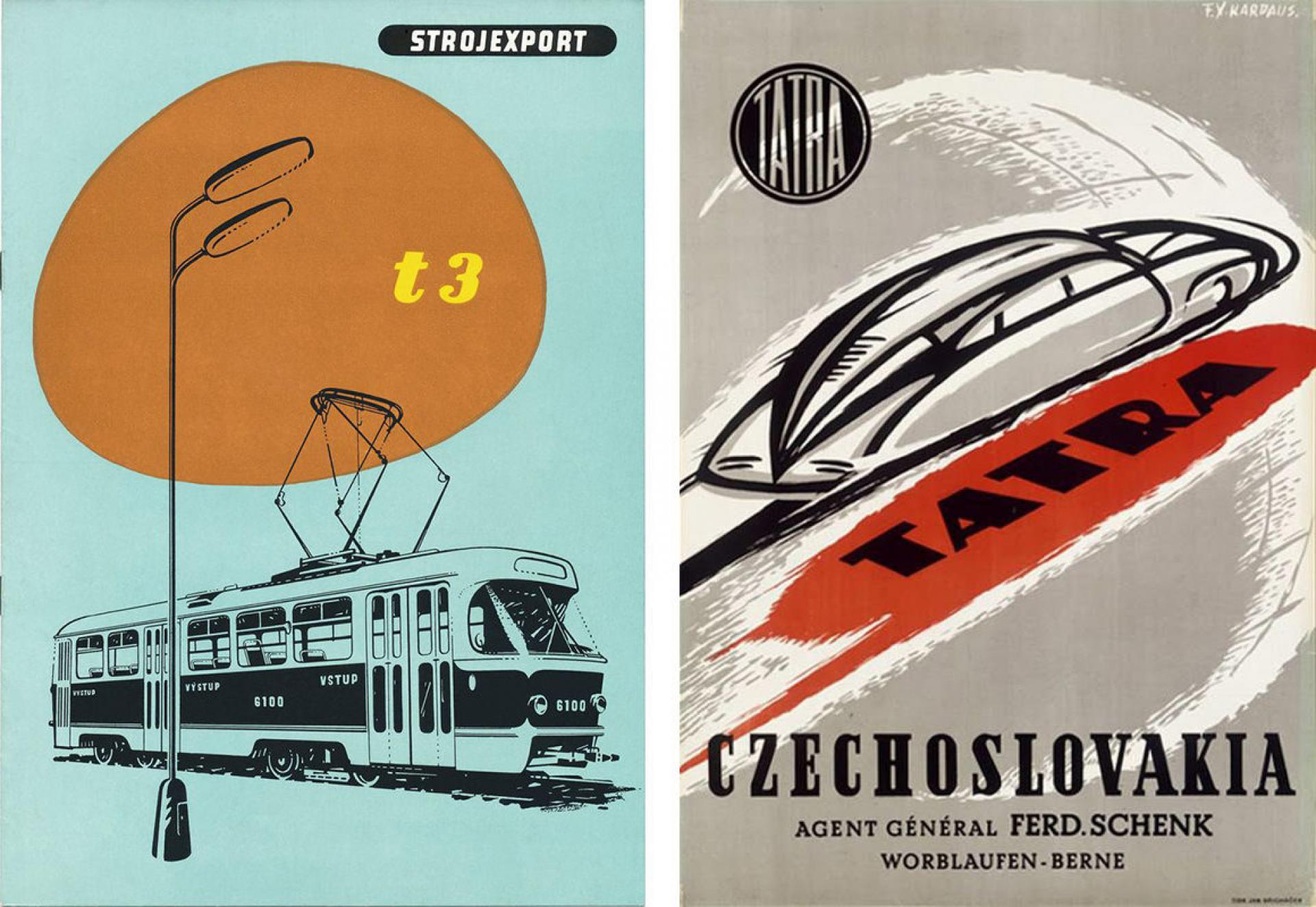
Left: Cover of a 1962 sales brochure from Strojexport, featuring the Tatra T3 tramcar. Right: Vintage poster featuring the Tatra T77.
In recent years, the Pragovka complex has been recognised as a heritage site and some of its spaces have been developed into an arts district. There is a retro-themed ‘Pragovka Cafe,’ and the place hosts film screenings, concerts and festivals. Reportedly as many as a hundred local artists have studios now on the former factory grounds, while the large E-Factory building has been converted into a gallery space.
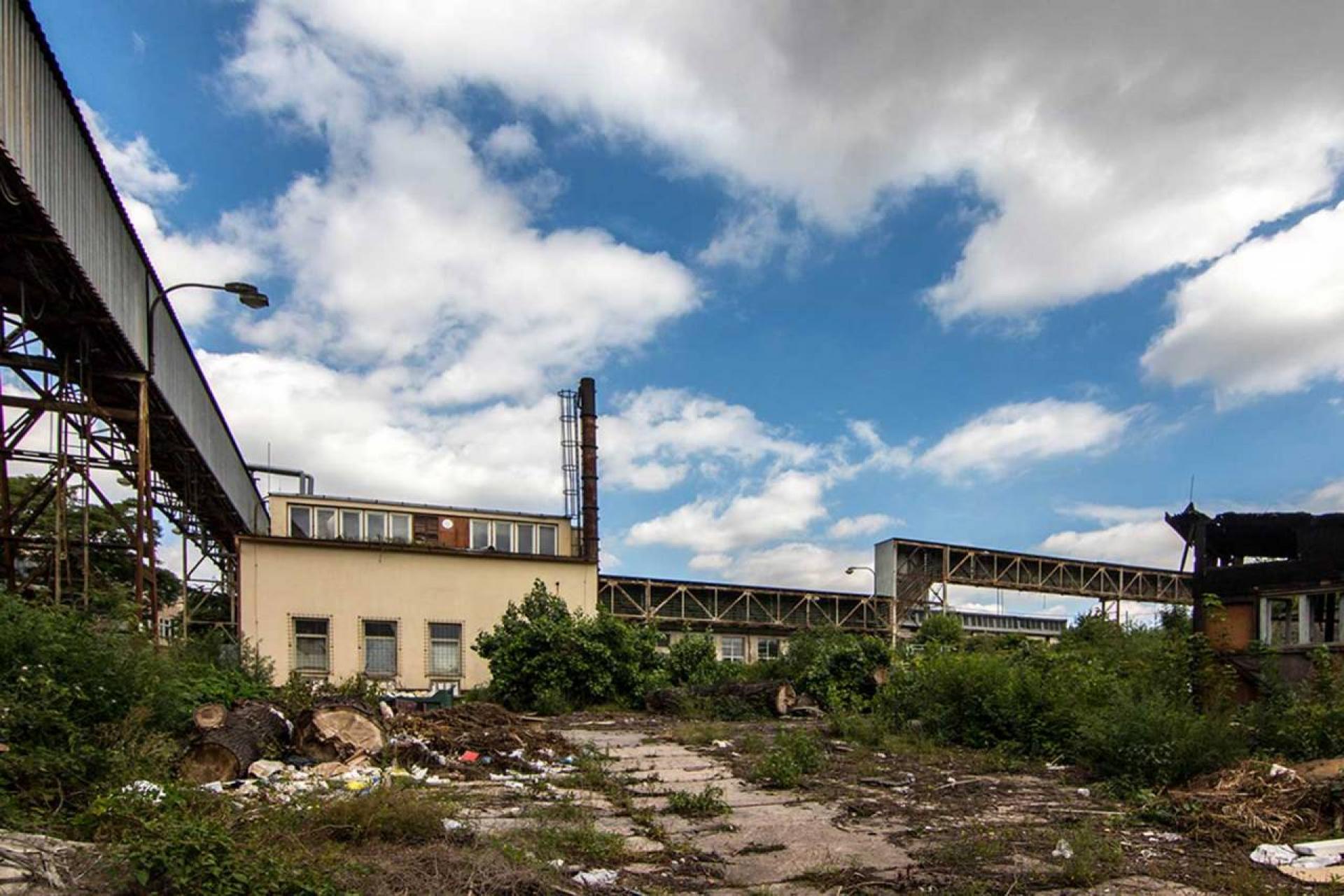
Some outer buildings still remain, linked by covered walkways. Other buildings have been bulldozed. | Photo Katka Havlíková
There’s talk of building apartments here too in future, a trendy new community rising up amidst the industrial decay. A large part of the complex remains off-limits for now though – and it was here that we entered. During the visit of Prague was fortunate enough to be offered a tour of its best ruins the local photographer Katka Havlíková.
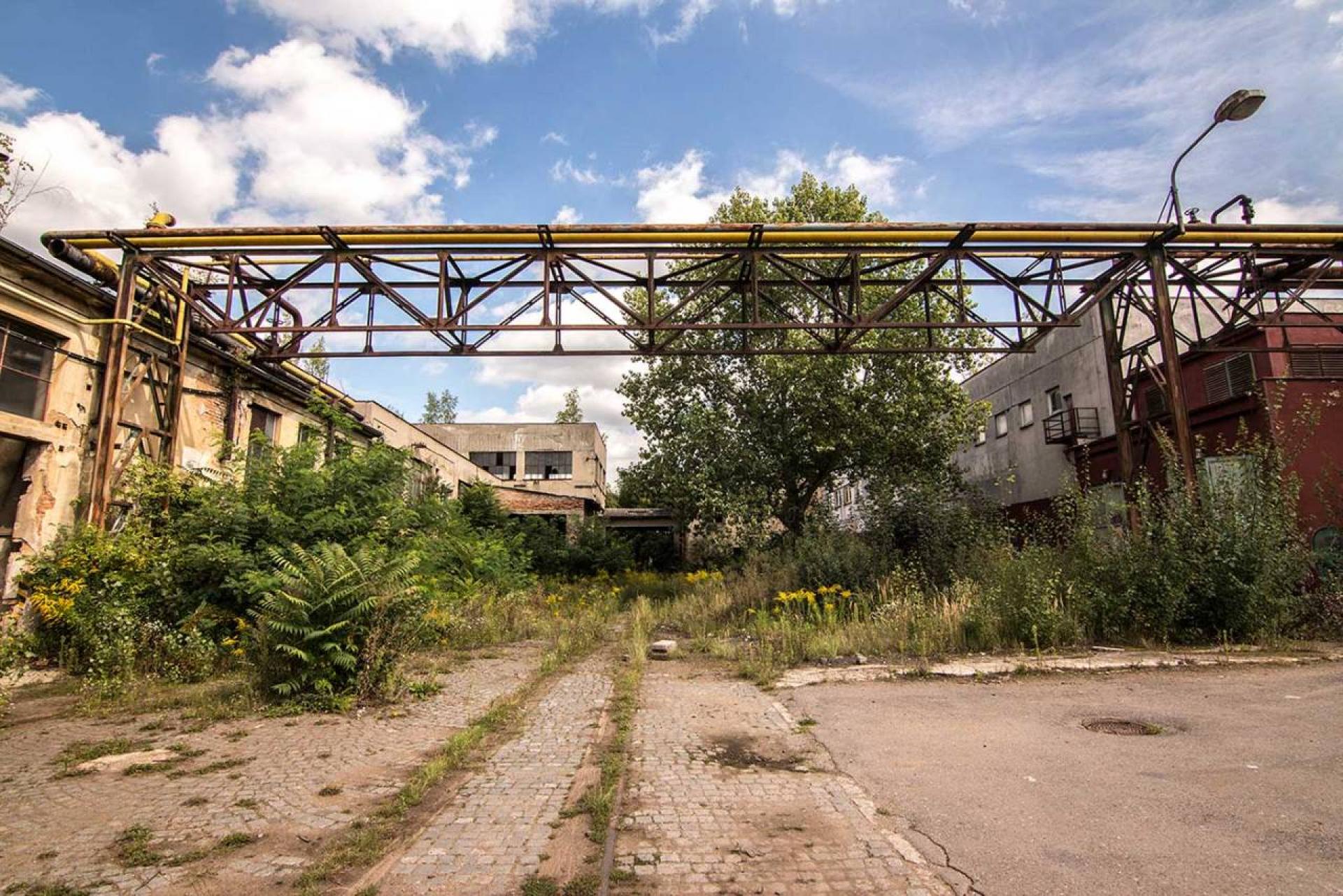
Raised gas pipes above an overgrown courtyard. | Photo Katka Havlíková
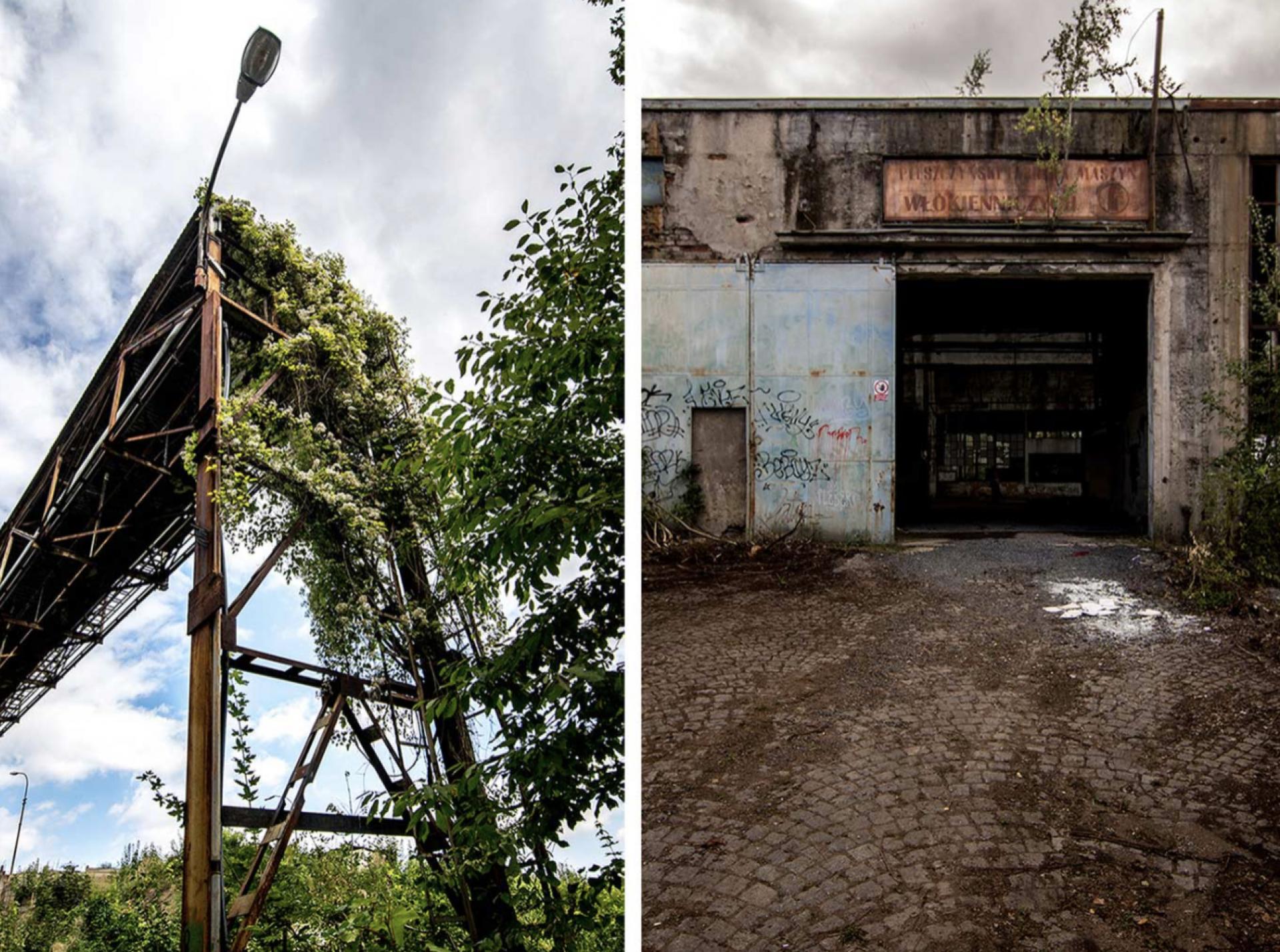
The factory has been abandoned long enough for creepers and graffiti to cover many of its surfaces. | Photo Katka Havlíková
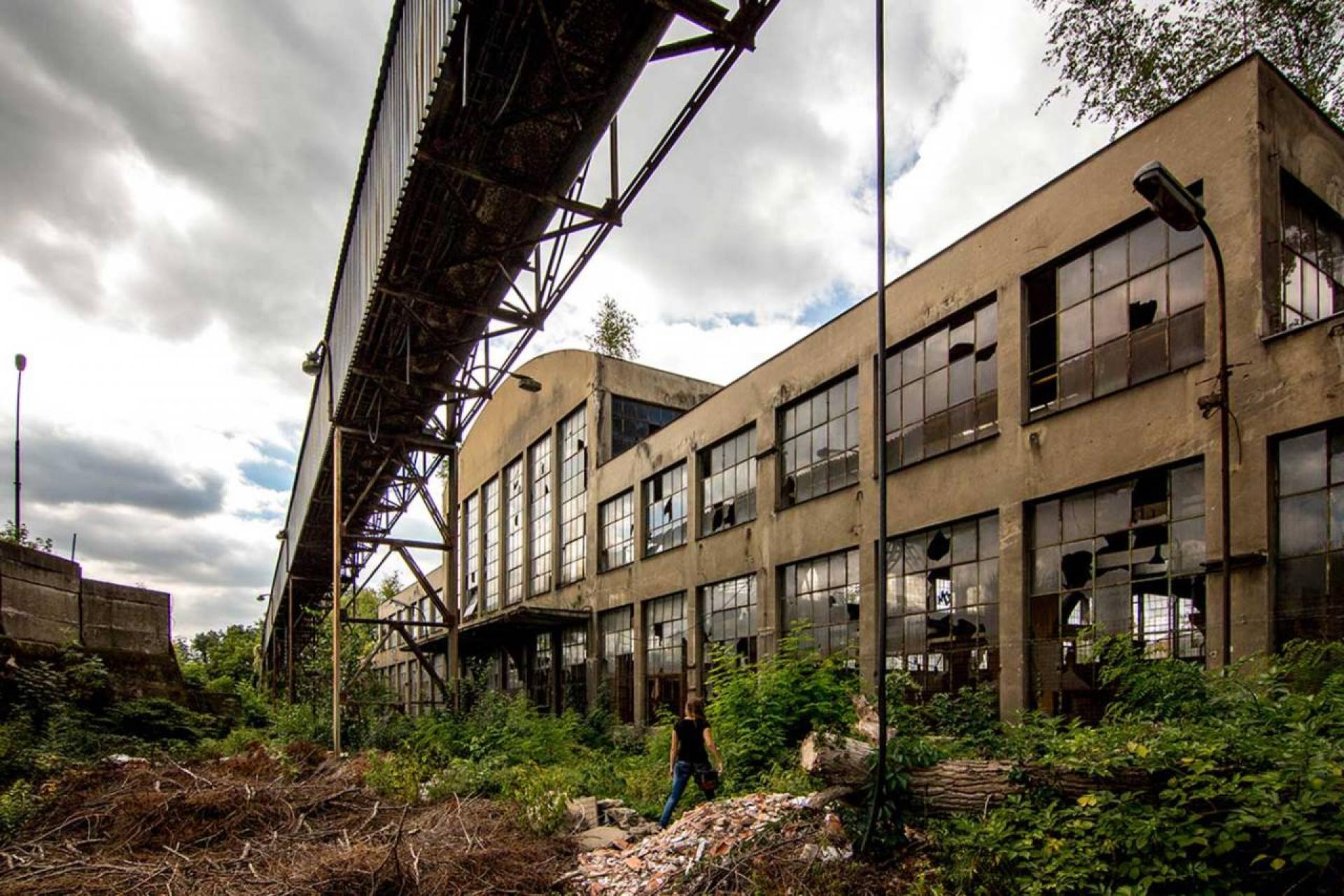
Katka picks a careful path through the debris-field, towards the first of the factory’s grand production halls. | Photo Katka Havlíková
She led us around the back of the factory where we scrambled up a slope of rubble to reach a promontory at the corner of the former yard. Ahead of us lay a sea of green. Thick vegetation hid the concrete courtyard, with only the occasional street light, rising like drowning hands from water, to suggest that anything unnatural lay beneath. The main buildings, those still standing, were just visible through the trees and so we cut a path down through the overgrown wreckage towards the old factory halls.
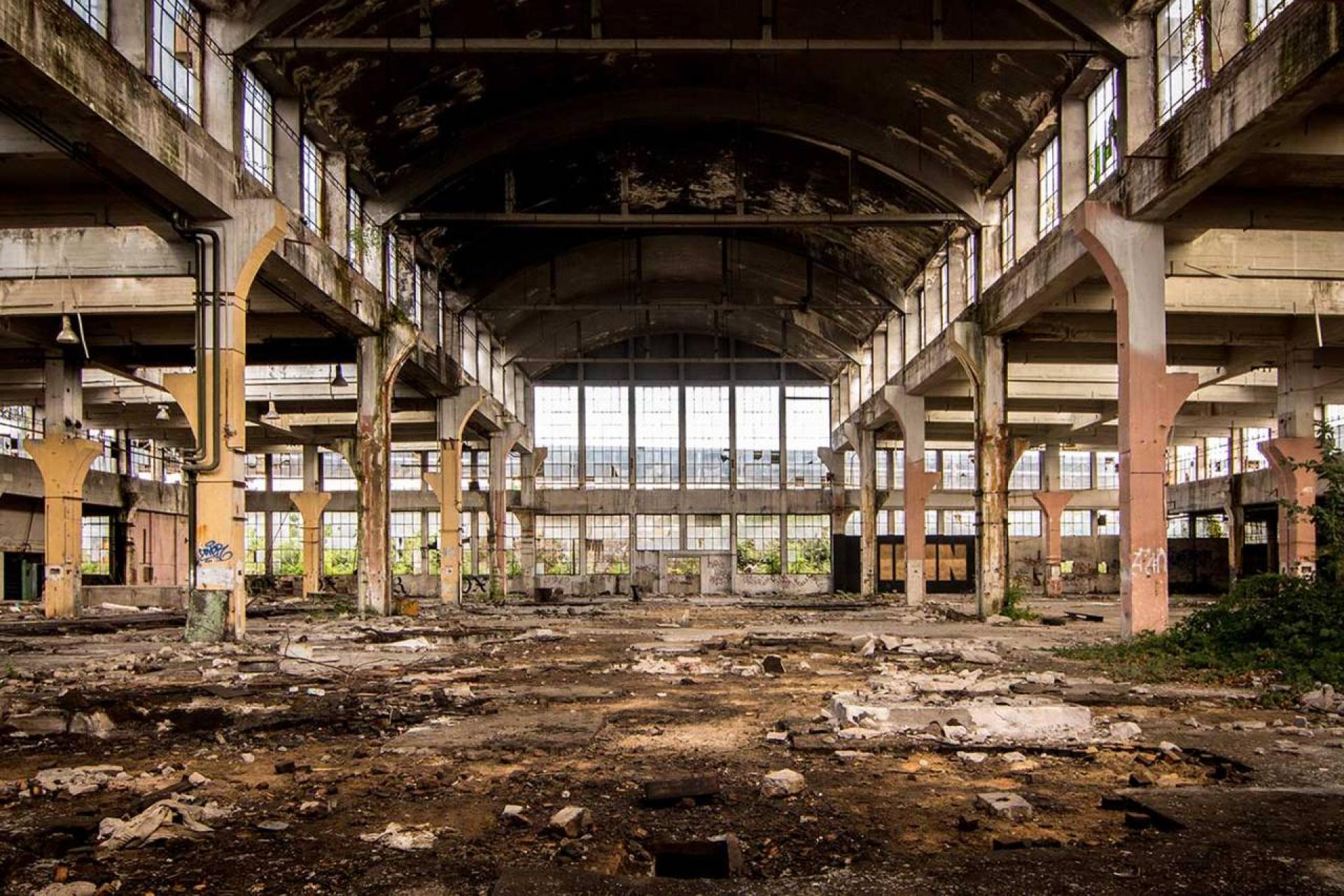
The largest of Pragovka’s manufacturing halls looks no less grand today with its full-height windows. | Photo Katka Havlíková
After poking around in a few of the outer buildings that rise now out of bushes and debris, we made it finally to the main manufacturing halls of Pragovka. It was strange to see a building this grand left to ruin. The complex was built back in a time when factories and power plants were temples of the people – places of pride, not merely function, their spaces defined with grand architectural flourishes. This main hall could have been a train station, not a car factory. Natural light illuminated the hall from floor-to-ceiling windows (much of their glass still intact), while pillars supported an arched ceiling high above.
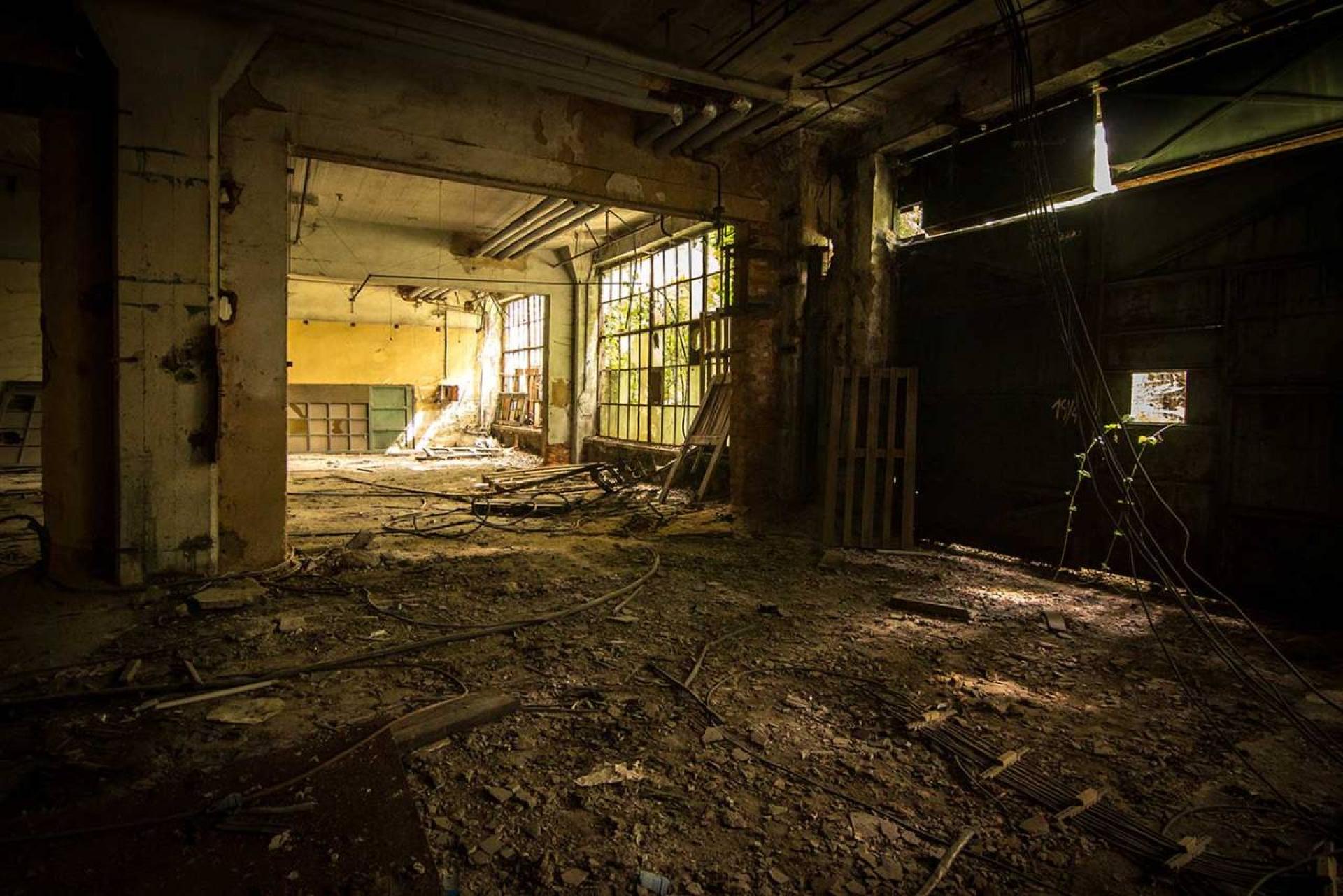
Nature creeps into Pragovka – vines find a way inside through broken window, letterboxes, or any other breach in the outer wall. | Photo Katka Havlíková
We didn’t see the new arts district at all – a fact indicative of just how large this complex was – but it was hard to imagine how any small business or community project could successfully take over a space like this. The factory halls were beautiful, but built on such a scale that maintenance and repairs would be an extraordinary burden, particularly after all these years of decline.
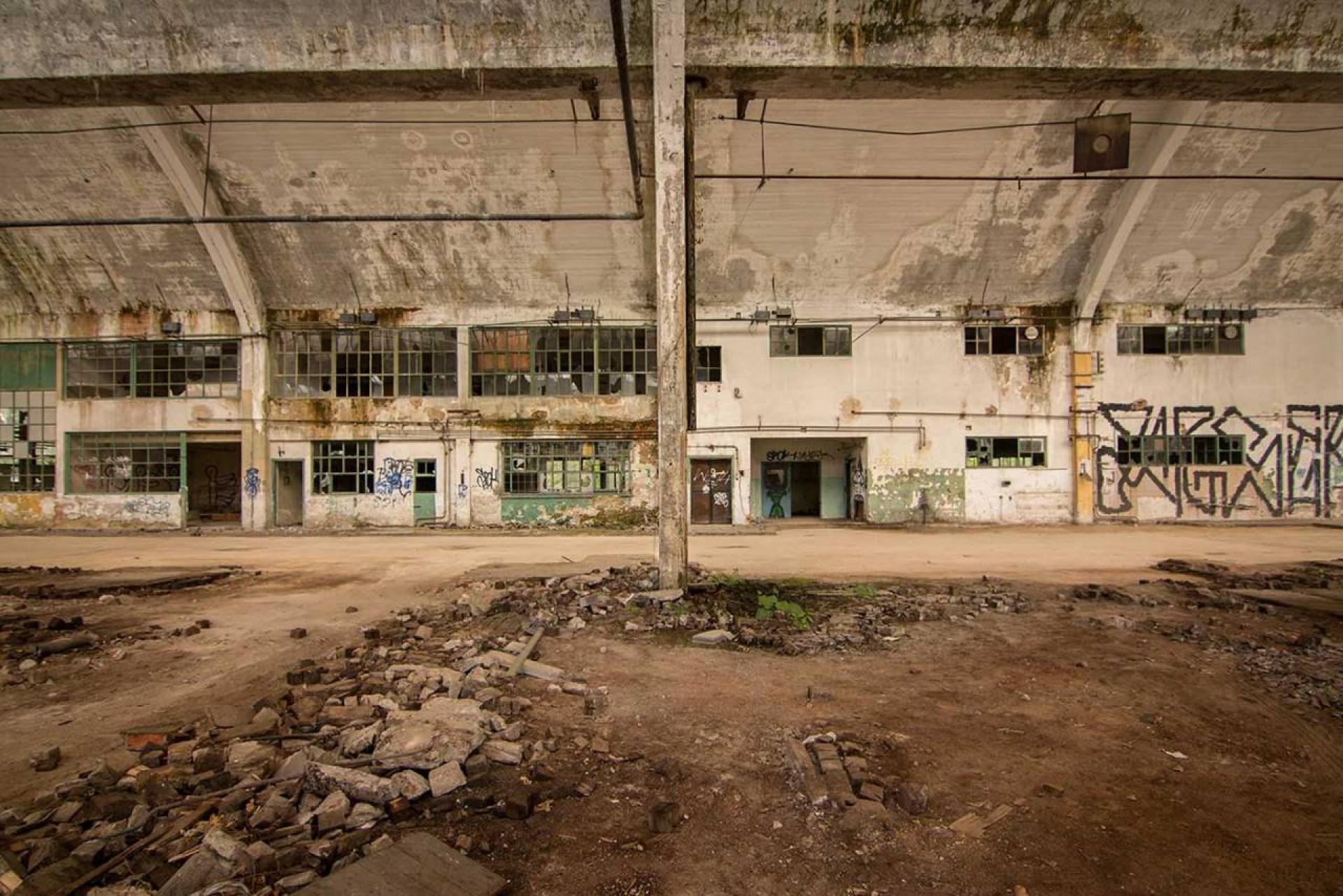
Two levels of offices lined the wall. | Photo Katka Havlíková
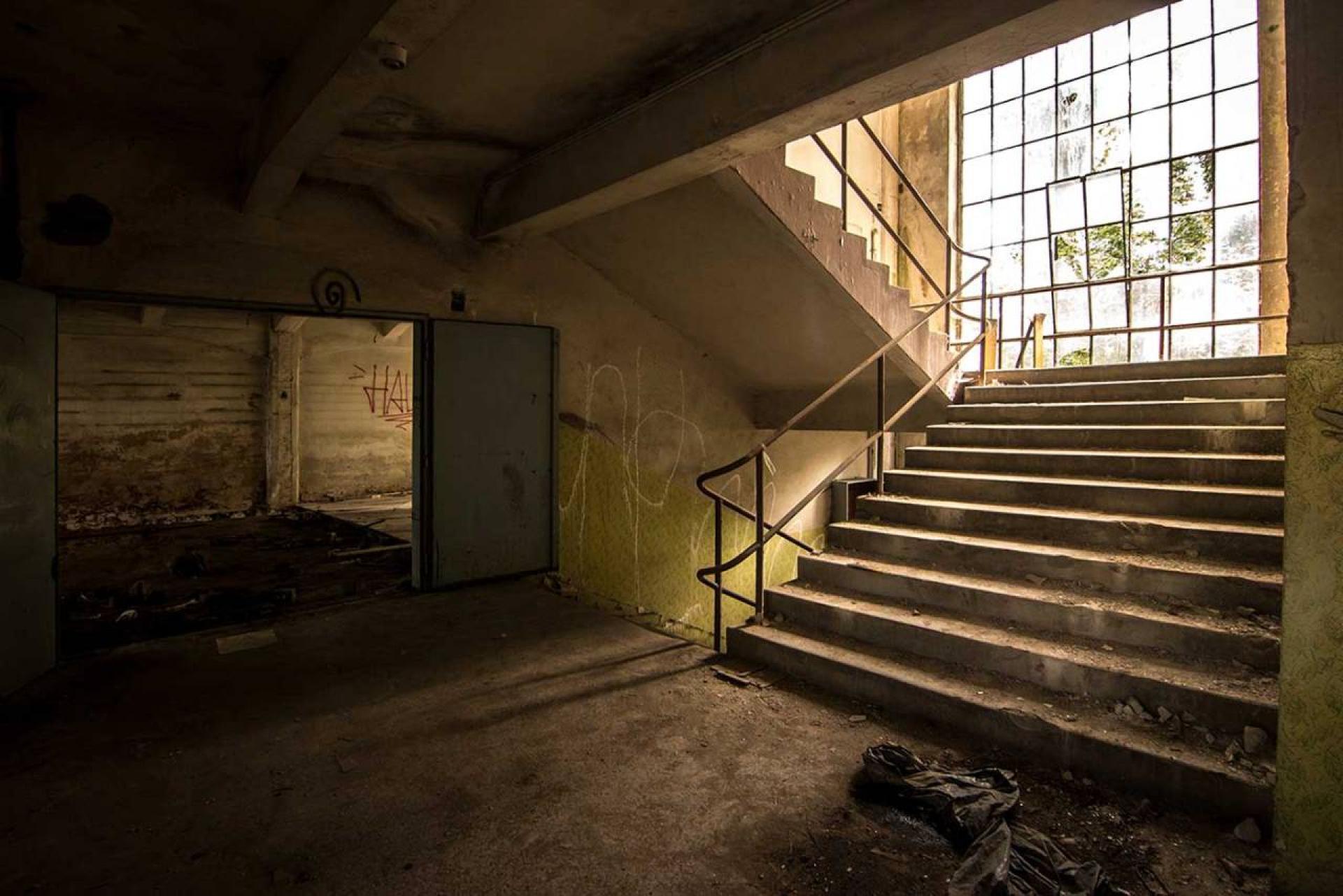
A staircase connects floors inside the main building. | Photo Katka Havlíková
The seeming inevitability of this factory’s ruin cast a melancholy mood over the few hours we spent wandering the halls of Pragovka. Right now, like this, with the warm sun slicing in sideways through the dirty glass windows, and the greenery of nature’s scouts – along with bursts of bright graffiti – lending fresh colour to the otherwise muted palette of pastel-painted walls and pillars: Pragovka might never look this good again.
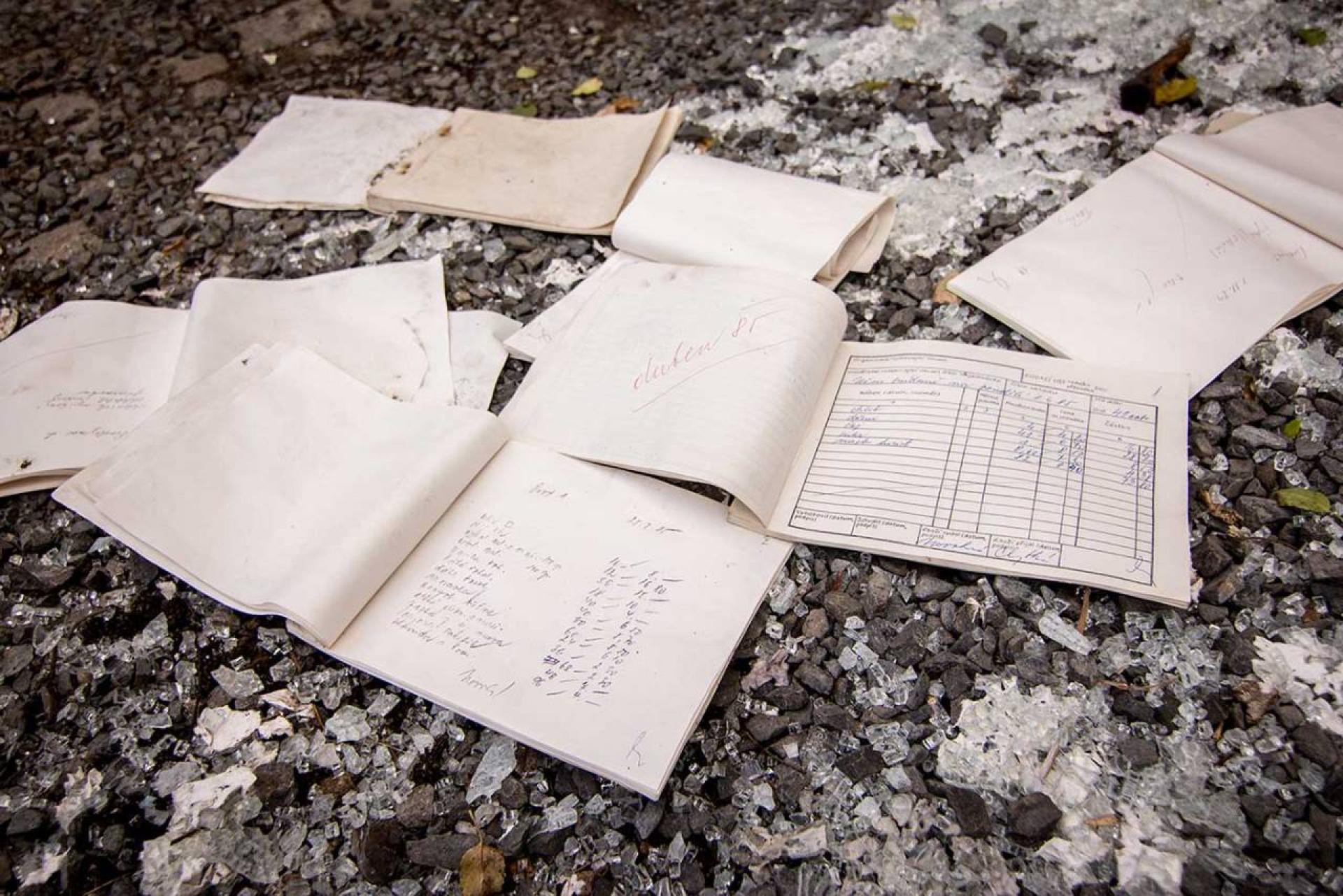
Old ledgers amongst broken glass in the courtyard.| Photo Katka Havlíková
When Pragovka falls, much of its history will be buried with it; and perhaps for some, that might be for the best. Pragovka is remembered not only as the heart of the Czechoslovak manufacturing industry, but it is also a place where the communists made their stand – forever linking these buildings with a historic victory for the pro-Soviet movement. In 1968 the Soviet Union and its allies led an overnight invasion of Czechoslovakia – to suppress the Prague Spring, a growing liberalisation movement under First Secretary Alexander Dubček. Although history remembers the event as an act of totalitarian foreign aggression, that invasion was not, in fact, universally unwelcome.
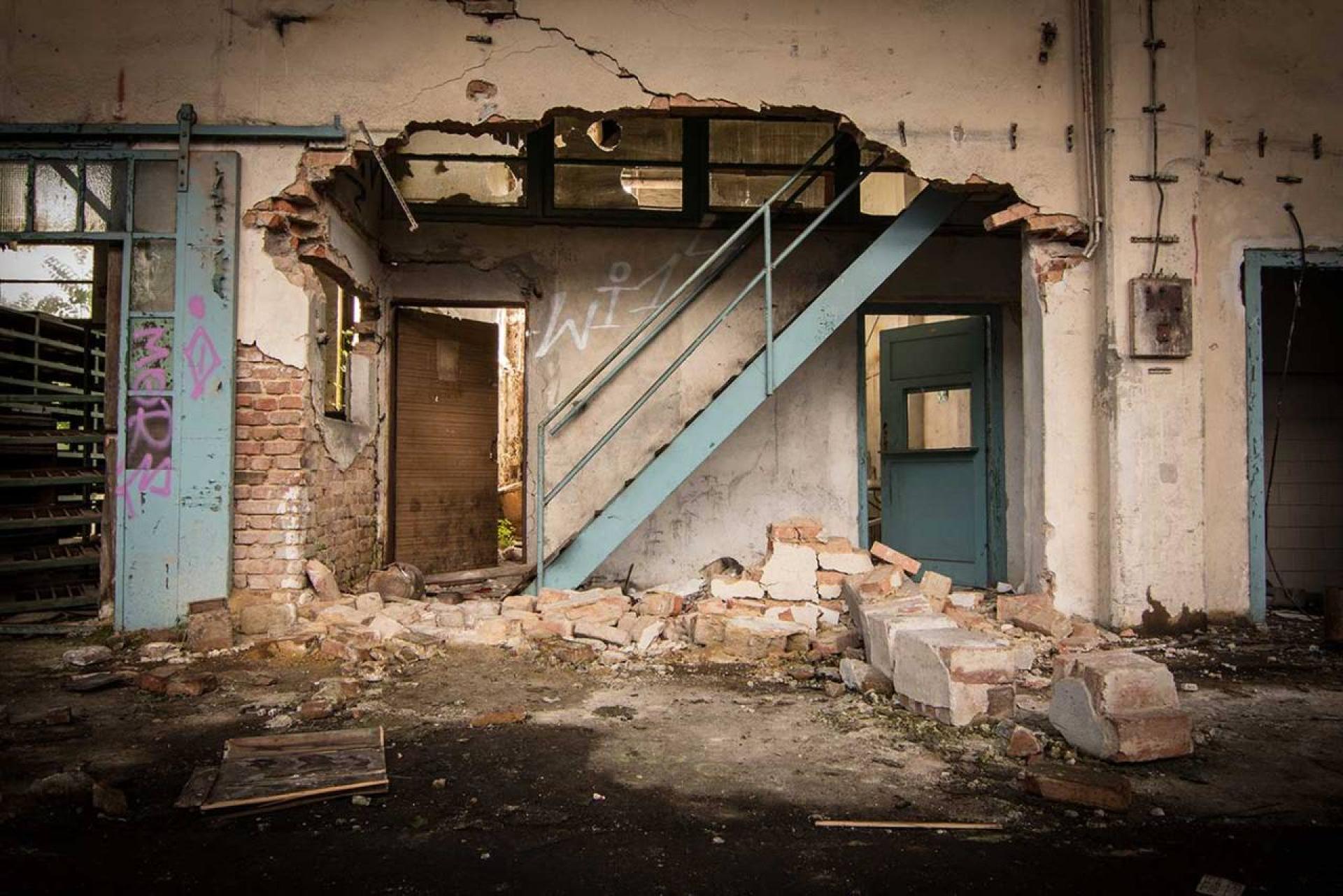
A wall has collapsed to reveal the stairwell inside. | Photo Katka Havlíková
Numerous workers’ unions in Czechoslovakia supported Soviet intervention in their country, and one of the key triggers of the invasion was a letter of invitation, that was written here, at the Praga Car Factory. In 1971 the Czechoslovak journalist Josef Maxa authored A Year is Eight Months, which recounts the events of the Prague Spring and leading up to the invasion. “Moscow’s Pravda published a letter from ninety-nine workers in the Pragovka factory in Prague to the Soviet Embassy,” he wrote. “The letter denounced the Czechoslovakian enemies of socialism and of the Soviet Union.” That document was known as the “Letter of the Ninety-nine Praguers,” and it warned the Soviet Embassy how: “the manifestations of the democratisation of society in our republic threaten the building of socialism and in so doing, attack the blood-hardened friendship between the Czech and Soviet peoples” (as paraphrased by Martin Půlpán).
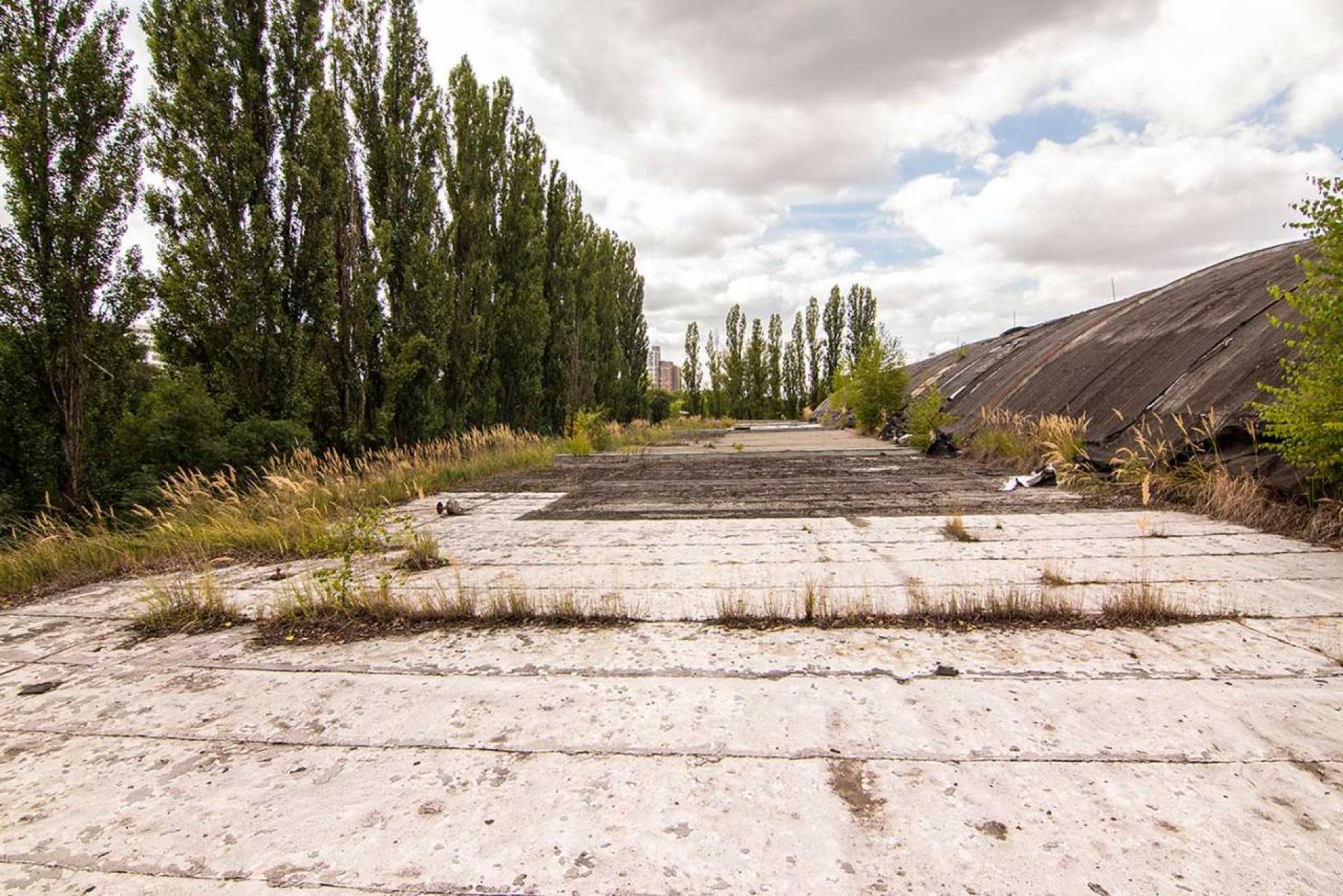
Rooftop above one of the manufacturing halls.| Photo Katka Havlíková
The letter claimed that all honest citizens of Czechoslovakia felt safer in the presence of Soviet and Warsaw Pact troops occupying their country. When Pravda printed the letter, on 30 July 1968, along with all ninety-nine signatures, the document would be used as justification for the swift invasion that followed in August. The incoming normalisation government that subsequently took charge of Czechoslovakia would valorise the authors of that letter – raising a memorial plaque at the main entrance to Pragovka, that read: “In the revolutionary tradition of this great workers’ nation, a letter with ninety-nine signatures was sent to the USSR in the critical year of 1968, requesting support and assistance in fighting anti-socialist forces.”
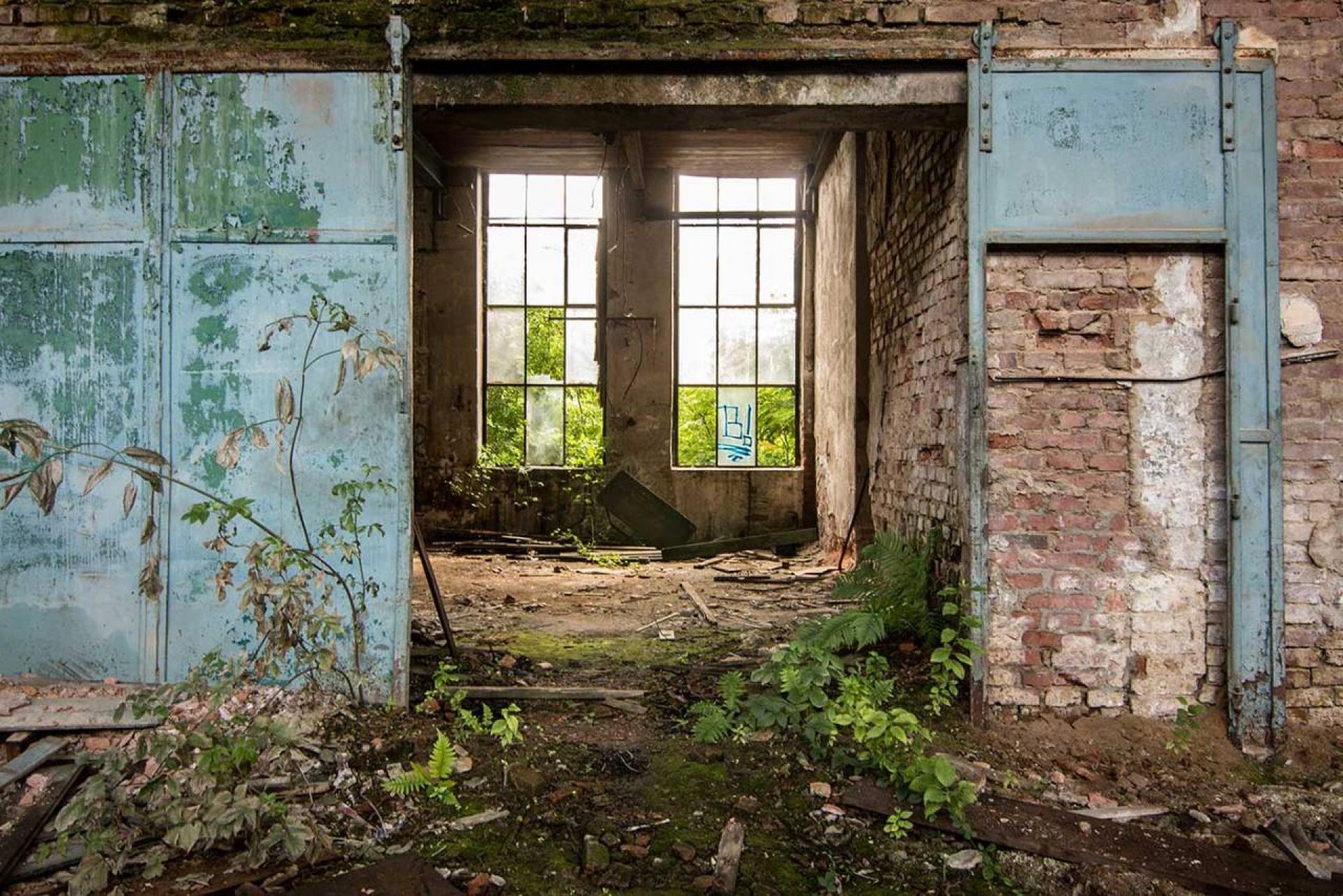
A bright and airy side room near the main factory floor. | Photo Katka Havlíková
Nowadays that plaque is long gone. The gates of Pragovka stand barred, and the halls where the letter was written are lost to a maze of rubble, weeds and graffiti. The factory’s decline today is an inevitability – it is a temple to a lost industry, a relic displaced from its time and no longer fit for purpose in the new industrial landscape of the Czech Republic.
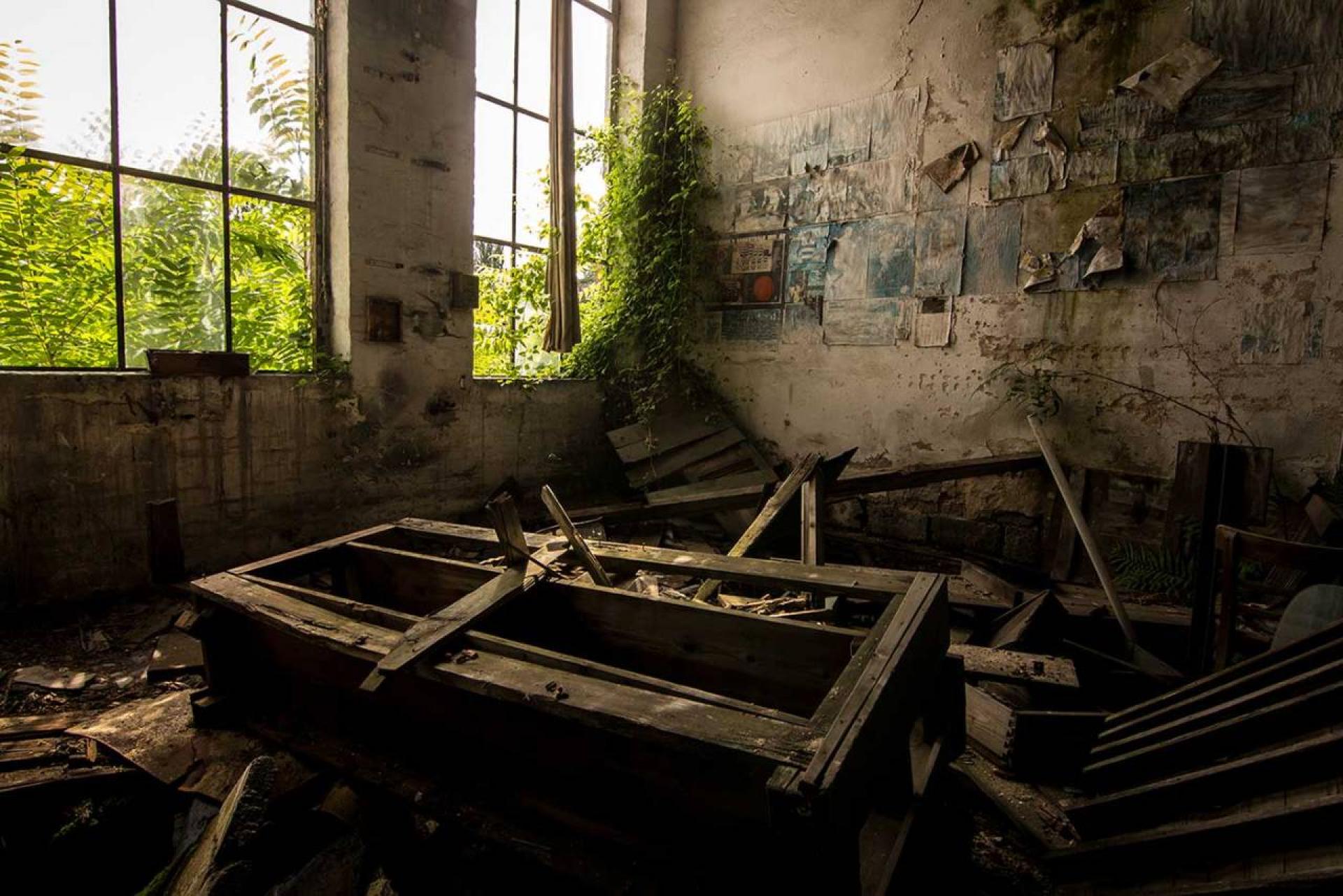
The wall in a former office space. | Photo Katka Havlíková
Though Pragovka’s political history likely doesn’t help to endear these halls to the citizens of contemporary Prague – and it’s hard not to read some level of symbolism as this celebrated factory, once enshrined like a victorious battlefield in Czechoslovakia’s communist historiography, is slowly carved up, and crushed, by the oncoming future.
–
by Darmon Richter
[adapted with permission from an article at Ex Utopia]